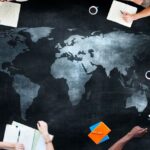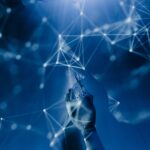
With the advent of artificial intelligence, a lot has changed because it can replace humans in various spheres of life, including art. Midjourney is one of the leading examples of how artificial intelligence replaces the artist’s role.
Midjourney is an art project created by American artist and programmer Jason B. McGormack in 2018. This project is based on deep learning and artificial intelligence, which allows it to create unique works of art.
Midjourney is trained to analyze videos and images, allowing it to create new photos and drawings. In addition, the program is responsible for choosing the color, tone, and composition. Thus, artificial intelligence performs functions that artists previously served. This collaboration between humans and machines is changing the traditional idea of creativity and art. For example, such tools are used in advertising. Even popular resources in India casino online with online slots turn to artificial intelligence for help. In reviews and some slots, it is already possible to notice the generated pictures. While intelligent algorithms can create many new ideas and experiments, humans still retain control and can bring their perspectives to the final product.
Can an AI replace a human being?
At the same time, the growing use of artificial intelligence in art raises the question of whether machines in the future will replace humans. Although this has yet to happen, this technology allows artists to create unlimited possibilities and new ideas that help push the boundaries of art and creativity.
Illustrations, photos, and pictures created by a neural network are getting more and more likes. But is it possible to distinguish images reproduced by a neural network from the live work of painters and illustrators? We asked professional artists what to pay attention to notice the difference.
The difference in the drawings
When the first drawings created by an AI were made, it was easy to notice the difference. The anatomy suffered: six fingers on the hero’s hand or some vague spot instead of the neck. There were also facial problems: strange and different eyes blurred mouth. But neural networks learn quickly, and now these bugs are fewer.
Not only professional artists but amateurs as well can feel the difference. A neural network creates drawings in the style of digital graphics—for example, beautiful fantasy plots. AI copes well with the idea of new worlds and unusual and strange characters.
But it has not yet mastered many techniques that can only be done manually: paint an oil painting, make a paper collage, or watercolor work. They express the nature of human feelings. Until a neural network learns how to feel, we are safe and able to distinguish the work of artificial intelligence from human intelligence. Many people say there is no soul in the generated results, which is their main difference. But some artists think there is a soul; only it is different – synthetic. Artificial intelligence feels different.
It remains with interest to watch the development of AI, and do not fear at all that the neural network will replace the creativity of the actual artist. On the contrary, there are many examples of a neural network finished by an artist, and it is a delight: the union of technology and the human soul.
A neural network is a new tool, another “tube of paint” of a new level. And the news often causes fear, and this is human psychology. However, new technology = opportunities for development.
The main thing is to be marked in art.
A neural network cannot make paintings utterly identical to those made by real artists. Handmade is more valuable than machine-made because each image is unique. The human intellect thinks on a larger scale. It may be a matter of time, though.
You don’t have to be a professional to distinguish neural network work from handmade work, but having minimal knowledge of fine art is worthwhile. A neural network cannot always capture the subtleties of anatomy, and sometimes it is too noticeable. In addition, neural Network works have a certain artificiality and uniformity. For example, the coloring is like that of wax figures.
Artists work in their style, which may change over time: a person is more flexible and does not know the limits of his imagination. And a neural network generates only existing directions and has a specific memory.
But the neural network will be improved, and the existing gaps will eventually be filled. In the era of automation, human labor tends to be replaced by machine labor. And if neural networks can’t be apprenticed to artists now, it may be possible in the future.
Risks for people
In recent years, artificial intelligence has been growing in several areas, including the automation of work and the replacement of humans in the workplace. While these new technologies can be helpful and efficient, they pose severe risks to individuals and society.
Here are some of the possible consequences that can arise from replacing people with machines:
- Loss of jobs: Replacing people with machines can lead to large-scale layoffs and cuts. It can lead to economic instability and increased unemployment.
- Inequality: Artificial intelligence can work without breaks or rest, allowing it to perform 24/7. It could lead to specific groups of people, such as people with low skills, losing their jobs and becoming unemployed.
- Dependence on technology: If companies depend on artificial intelligence and automation, they may become vulnerable to the risks of technical failures, cyberattacks, and other disasters.
- Changes in the labor market: Artificial intelligence may change the labor market structure, creating new opportunities for skilled professionals but leaving people with low skills behind.
Given these risks, it is essential to strike a balance between using artificial intelligence and preserving human jobs and skills. It is also necessary to ensure that ethical standards and regulations of AI are understood and applied to ensure the safety and protection of human rights. In addition, it is essential to develop skills and knowledge to help people adapt to the changes associated with artificial intelligence and automation.
The conclusion is that artificial intelligence can have positive and negative consequences for people and society. Therefore, it is essential to strike a balance between the use of technology and the preservation of human jobs, ethical standards, and skills. Only in this way can we ensure technological progress’s stable and efficient development while preserving the human factor and protecting people’s rights.
Artificial intelligence can be a breakthrough in technology development and help people solve complex problems. Still, at the same time, it can hurt human life and society. Therefore, it is necessary to ensure appropriate regulation of the use of artificial intelligence, protection of human rights, and development of skills needed to adapt to changes associated with this technology. Moreover, it is the only way to ensure future technology development’s sustainability and efficiency.






